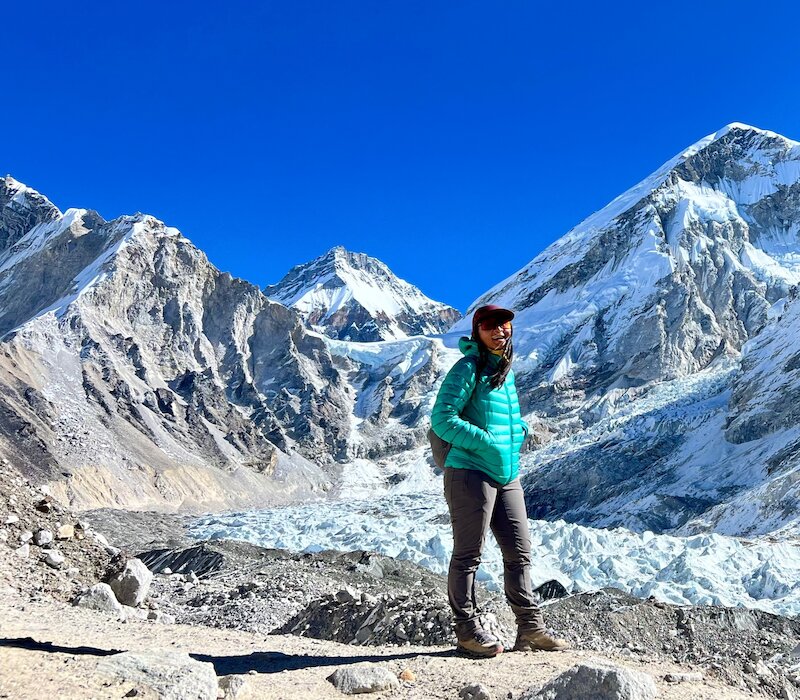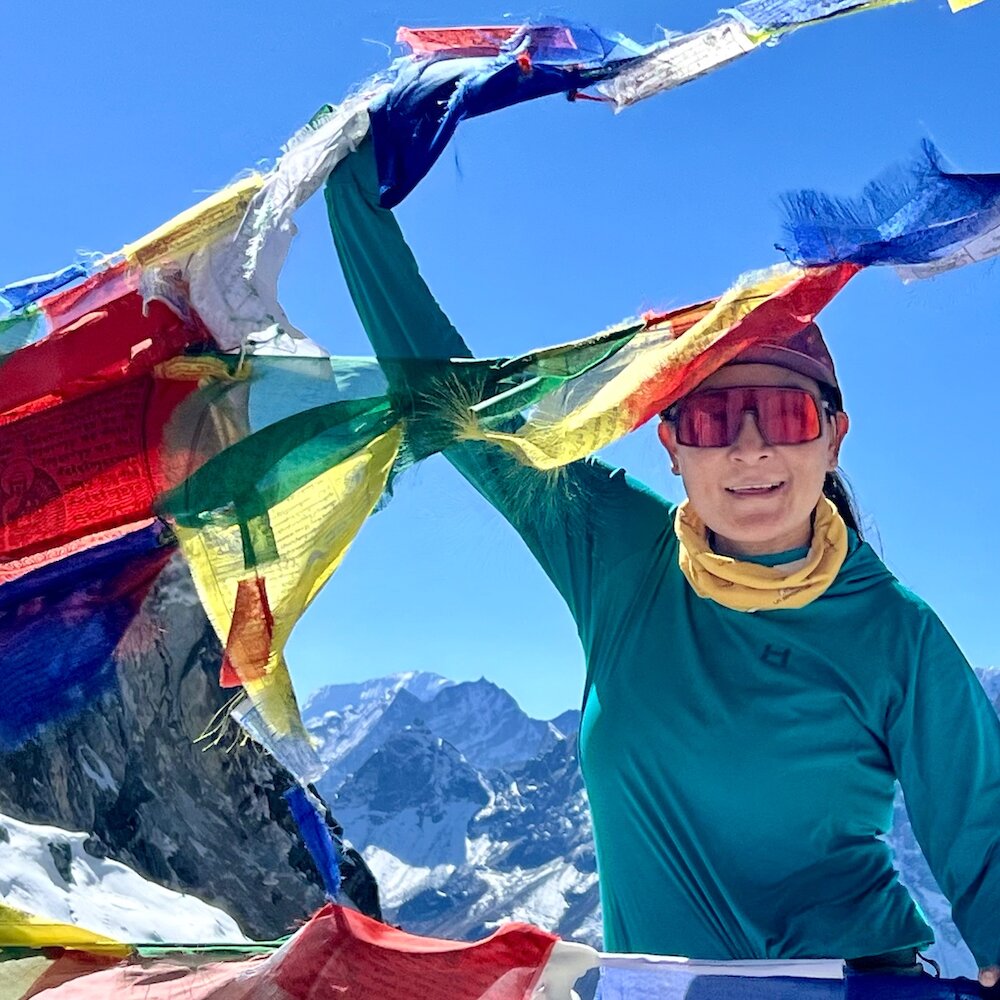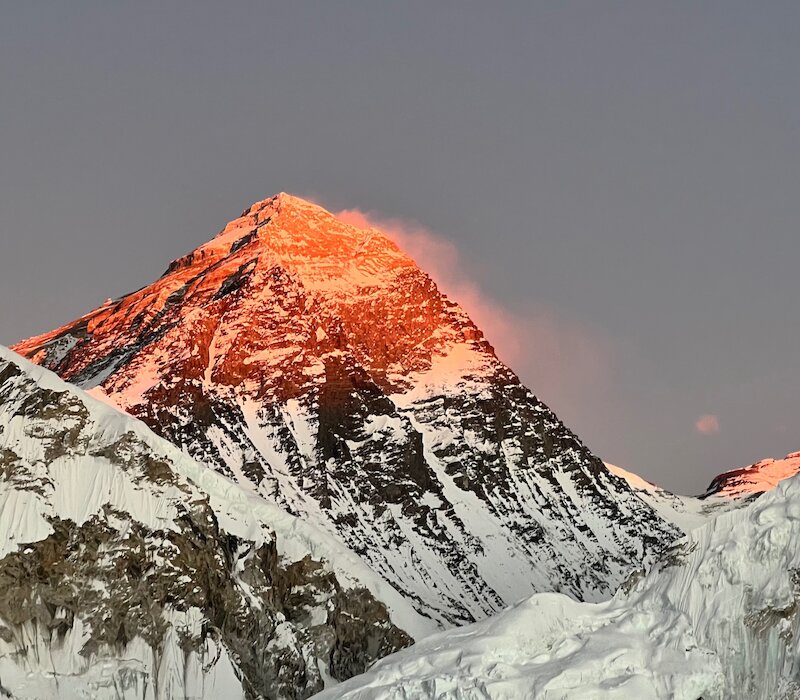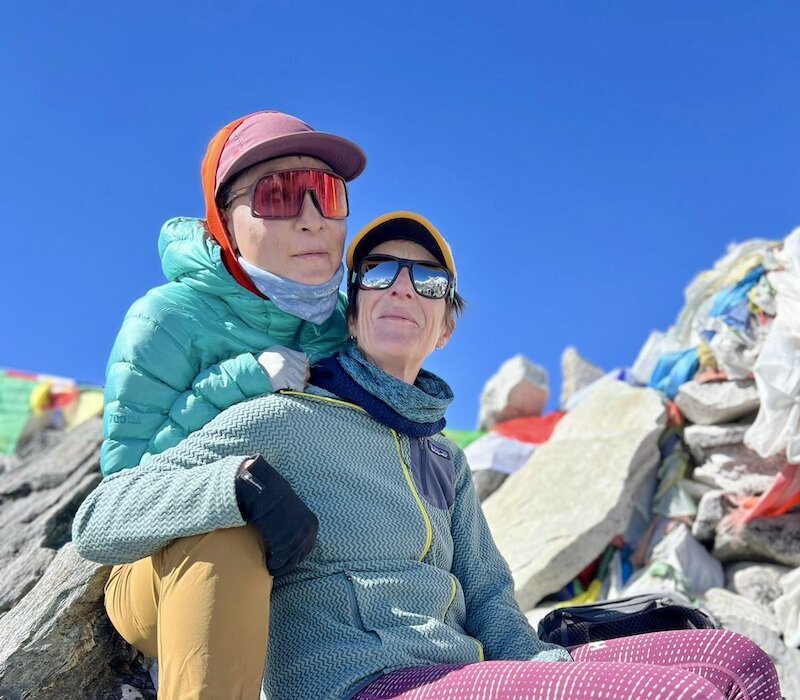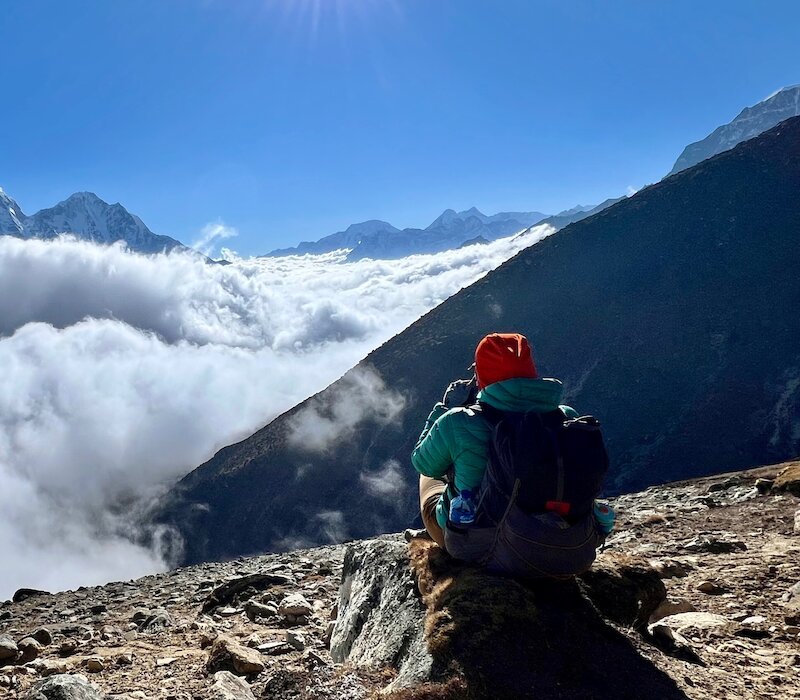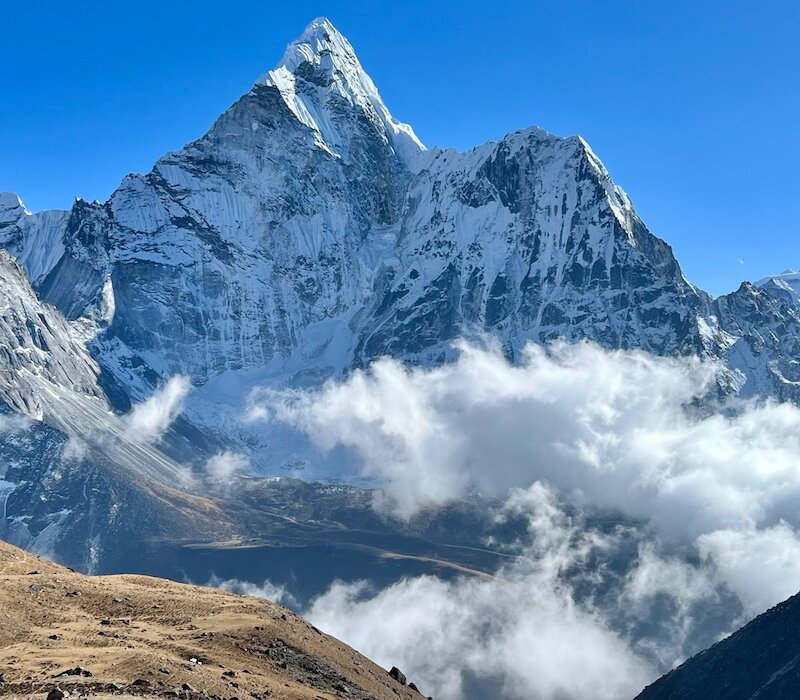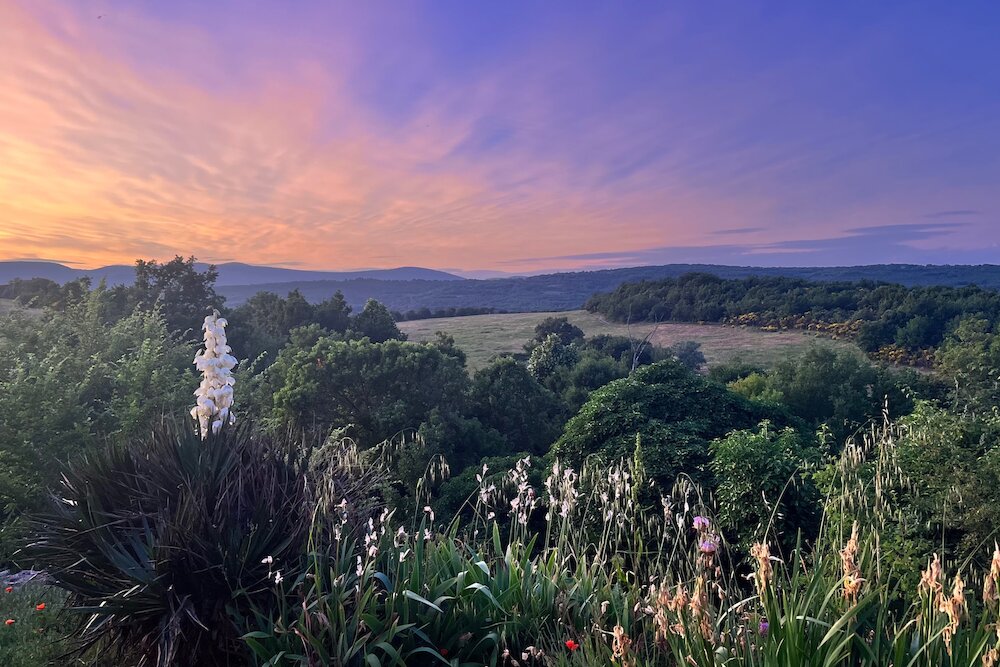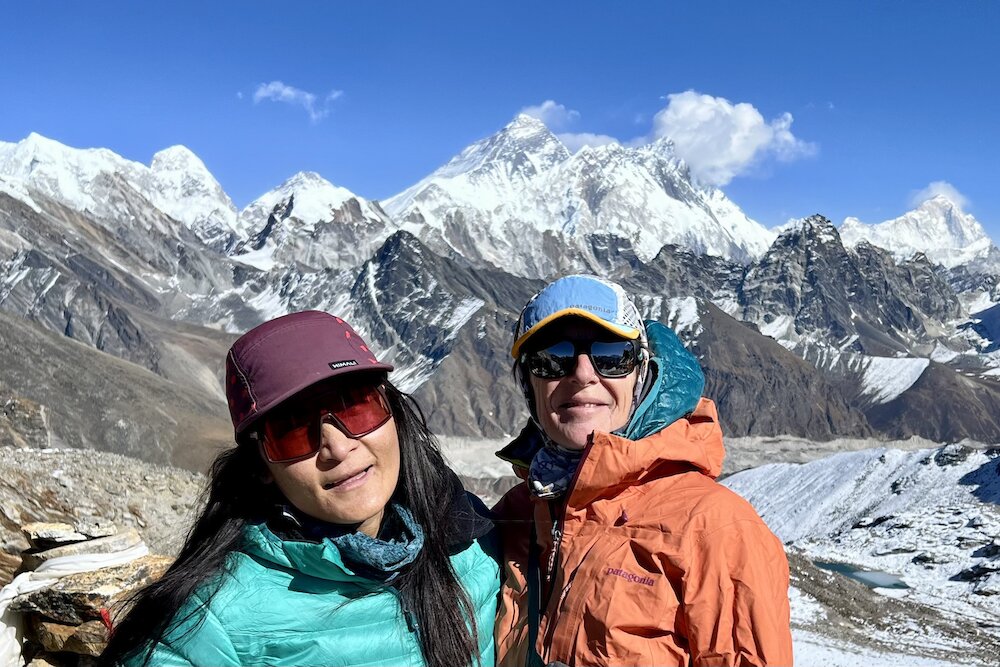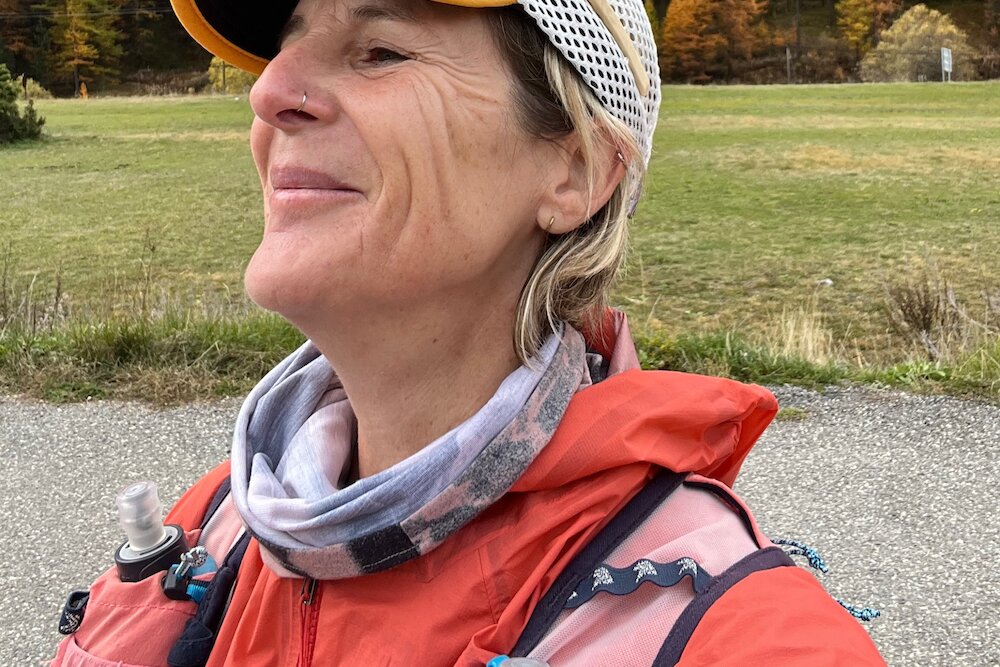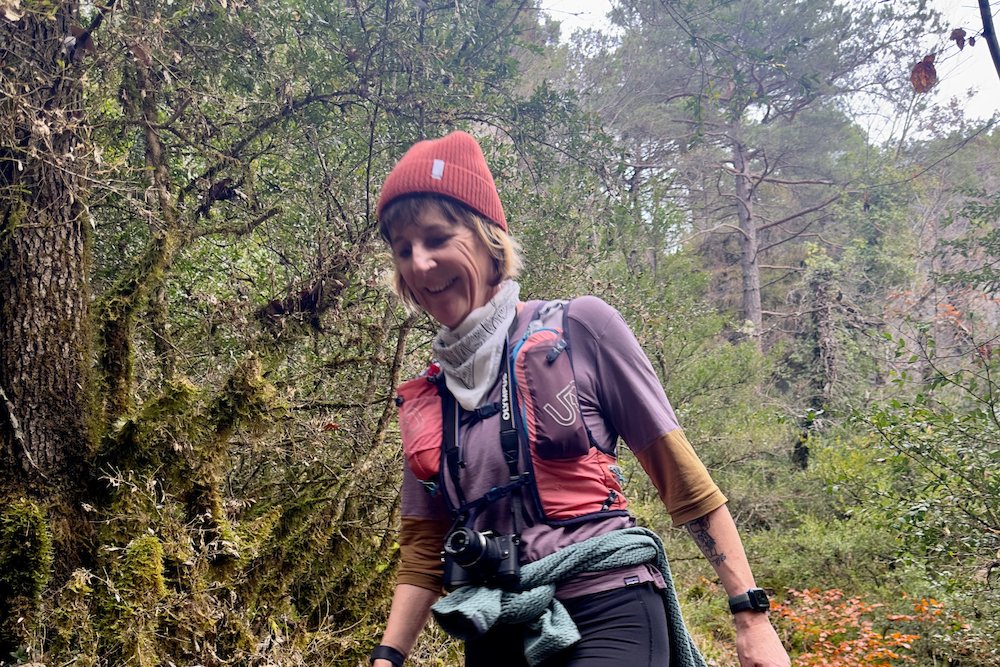Phunjo Lama's story
A Himalayan childhood
Phunjo Lama is a Nepalese woman in her thirties. She comes from an isolated village located at 3500m in the Himalayas. Raised by her grandfather, Phunjo spent her early years transporting salt to Tibet with a herd of yaks, often walking long distances and carrying heavy loads herself. She had little schooling, as school was almost non-existent in her village and the family’s income also depended on her contribution. At the age of 13, her older brother, who had moved to Kathmandu, invited her to join him in the capital. With 45 kg of supplies on her back, Phunjo set off on a two-week journey on foot, expecting Kathmandu to be little more than a large village. She imagined becoming a Buddhist nun, as opportunities for women were limited.
A first profession
But Kathmandu opened up other opportunities for Phunjo. Her brother enrolled her in school ; the transition was difficult. Given her level of schooling, Phunjo was placed in a class with much younger children; Phunjo didn’t speak Nepali at the time- in her village people speak Tibetan - and she describes these years as arduous. However, she managed to learn the language, and by 2013 her linguistic skills proved invaluable. A woman from her village, not knowing how to call for an helicopter, asked her for help for her pregnant sister who was in labor, her survival and that of the baby depended on being airlifted to the nearest hospital. There were no doctors in this village in the heart of the Hilamayas, and women still sometimes died in childbirth. Phunjo herself lost her mother in such circumstances when she was just two years old. Thanks to her Nepalese, Phunjo managed to coordinate the rescue, and both mother and child survived. This experience led to an unexpected opportunity; through the helicopter pilot, Phunjo discovered the possibility of becoming a mountain rescuer. She attended three training courses in Nepal, and was sponsored to complete her training in Europe. She thus became the first female long-line helicopter rescuer in Nepal.
Guiding in the Himalayas
Phunjo describes herself as deeply committed to her career as a rescuer at the time, but very uncomfortable - being steeped in Buddhist culture - with the fact that her income depended on often very serious mountain accidents. Thanks to her colleagues of the time, she discovered mountaineering and excelled in both technical ascents and high-altitude expeditions. Like many Nepalese mountaineers, she saw it as a way of earning a living and paying for her daughter’s schooling. She borrowed money from a family friend and took the necessary courses to become an accredited mountain guide in Nepal, a profession she pursues today. She would now like to obtain international accreditation, which would open up other opportunities, but the training is expensive and she has not yet been able to finance it.
